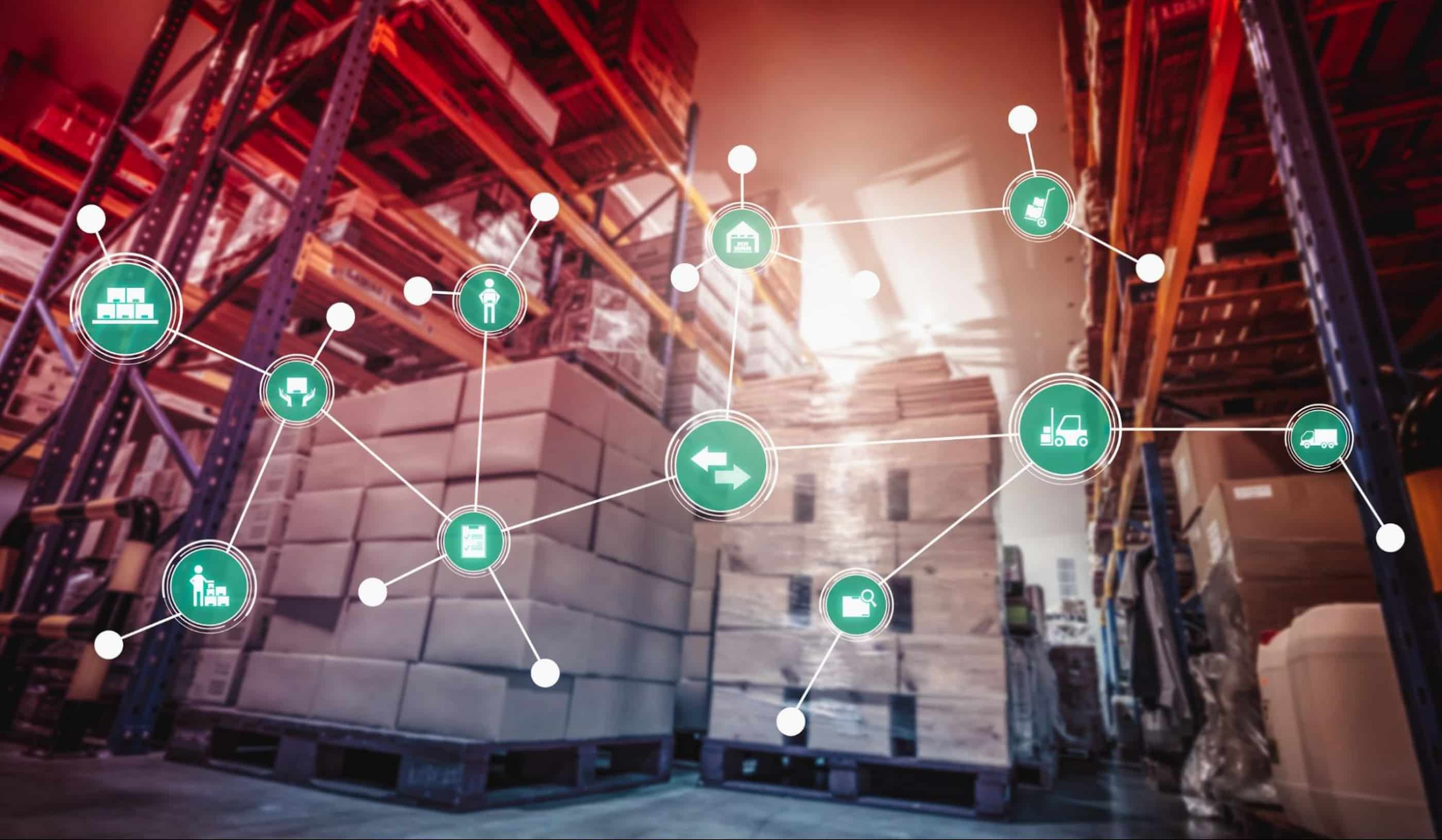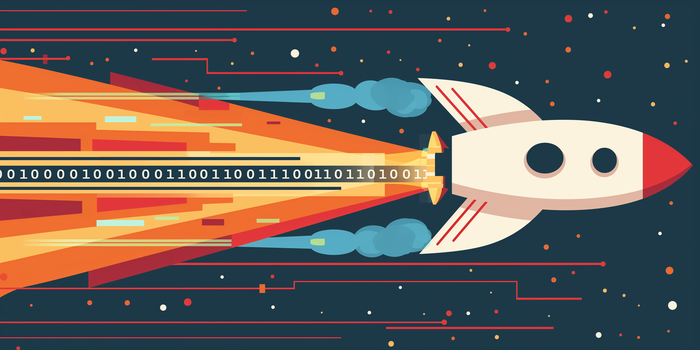Cloud is supercharging 5G development, transforming every industry along the way

Brian Kracik
Contributing Editor - Telecommunications
How 5G and Cloud will change every industry, including yours.
In the next decade or so, the 5G value chain may be worth up to $3.6 trillion, according to research firm IHS Markit. The combination of 5G, the cloud, and edge computing is a new paradigm that has the potential to change any and every industry it touches. Manufacturers will use 5G and the cloud to transform and optimize how products are made. Retailers will use it to optimize supply chains, logistics, and customer experience. Transportation will be reshaped through a connected infrastructure that may, finally, enable the future for autonomous vehicles. The possibilities are inspiring and endless.
Understanding how 5G works will be important for CIOs identifying business opportunities that require the capacity, low latency, and reliability that only this fifth generation of broadband cellular technology delivers. Below is a primer to help understand the basic capabilities of 5G, how it integrates with the cloud, and some use cases that show 5G in action.
The cloud’s role in 5G
One of the core concepts of 5G is the notion of connecting everything. The last decade has seen an explosion of data, spurred by mobile computing and the Internet of Things. The cloud was a necessary component in that as devices did not have the computing power capable to perform high-level tasks. Edge computing will change that, providing power at the edge, but most data will still eventually end up in the cloud, where artificial intelligence and machine learning can be applied, analysis can be performed, and security applications can monitor and protect the entire system.
The cloud will be crucial in two areas 1) for enabling CSPs 5G networks and 2) for bringing enterprise 5G Edge use cases to life. For instance, Google Cloud works with a variety of CSPs to help imbue the power of the cloud into their networks through techniques like containerized network functions (CNFs), software defined infrastructure, and network slicing. This is often referred to as the “cloudification” of telecommunications networks. Check out the latest work we have been doing with Bell Canada for their 5G Core.
Watch: Google Cloud for Telecommunications series on YouTube
Outside of the traditional cloud strengths like AI, ML, data analytics, storage, security, computation and so forth, the cloud will also be important in the functionality of edge computing in combination with 5G. We have partnered with ISVs and CSPs around the globe, AT&T, Bell Canada, JIO, TELUS, Orange, Verizon and others on Google Distributed Cloud Edge (GDC Edge), which is quickly becoming the de facto edge choice globally. Verizon is combining Verizon 5G Edge with GDC Edge to, “enable enterprises in industries from retail to manufacturing to unlock the power of 5G and mobile edge computing and gain operational efficiencies, higher levels of security and reliability, and improved productivity,” according to Verizon.
Below are some of the use cases that illuminate the features of 5G Edge and how they are being, or will be, applied in the near future.


5G for robotic surgery and healthcare
Healthcare is one of the prime examples of the potential of 5G capabilities. The combination of speed and reliability opens up a variety of use cases, and enhances existing capabilities.
Take, for instance, the case of robotic telesurgery. A surgical robot is typically a stationary machine standing over an operating table that has at least one primary articulated arm and several appendages. A surgeon controls the robot from a stationary console that provides a video feed, patient telemetry data of vital signs like EEG, ECG, heart rate, respiration, and haptic feedback to the controls. In robotic telesurgery, the patient and the surgeon do not need to be in the same room. Or, even the same continent.
5G will be critical to the future of robotic surgery. Consider some of the requirements in terms of throughput and latency for a robotic surgery. Robotic telesurgery will need to be able to support speeds up to four gigabits per second, at latency as low as 5.5 milliseconds over long distances. Current 4G LTE communication cannot support those requirements. Wi-Fi could technically support those requirements, but not the distance that telesurgery would require. With 5G, the speeds provided by the higher bands, plus the latency reduction inherent with URLLC, make robotic telesurgery much more feasible.
Another prominent benefit to healthcare in 5G will be the use of private networks. Unlike previous generations of cellular networks, 5G will be able to set up secure networks that are separate from the public infrastructure that everybody uses. Imagine the ability in a large hospital to set up the low 5G spectrum bands for real-time patient data (like vital signs), along with the middle and high bands for high speed rich communication, using the capabilities of URLCC, MEC, and eMBB for communication between devices, caregivers, and the cloud. Or 5G and edge computing could be used to transmit data from ambulances in the field to doctors waiting at the hospital.
5G for manufacturing operations
One area where the combination of 5G, edge computing, and the cloud become especially potent is in manufacturing. The connection of the physical and the digital will be the biggest and best use case of 5G in manufacturing. The concept of Industry 4.0 has been around for several years, but its defining features of digitization, smart automation, and interconnectivity will be supercharged by 5G.
Consider some features of a smart factory:
- Robotics: Stationary robots that build products, mobile robots that move material and products to and from the production line, and logistics robots that packaged those products, connected through mmWave 5G and URLLC, enabled to do data processing and analysis at the edge through MEC, all sending data to each other and the cloud through mMTC.
- Worker safety and quality assurance: The mixture of 2D and 3D cameras, video, computer vision, artificial intelligence, and 5G allow for automated QA to be performed right as new products come off the line with real-time analytics.
- Operations: All those robots, sensors, and output need control mechanisms and oversight. 5G on a private network within a factory environment combined with MEC, URLLC, and mMTC can all roll up to the cloud, which can analyze efficiency and output, using AI and machine learning to help optimize the process.
5G for retail
Emerging 5G networks are a potential game-changer for retailers looking to deliver more value and gain more customer insights across everything from merchandising to store experience to point of sale.
- Personalized shopping: There are many opportunities to evolve the customers buying experience. Inside the store, connecting sensors, integrating social media, loyalty program details, and other data enables a more useful, cloud-based analytics capability in near-real time. 5G can bring increased insights and a dynamic of mobility and increased interaction to the experience. These data-based insights would create opportunities for mass-customized and relevant services for consumers, such as personalized shelf displays, predictive inventory management, and real-time integration of external partner data sources. Soon, stores could be functioning more like personal shoppers. And with the help of extended reality (XR) your personalized shopper could help you try on clothes virtually with the click of a button or place a car (like the BMW iX) virtually in your driveway – all innovative ways to improve customer engagement with products.
- Video to improve CX: Waiting in any line is never a good customer experience and the ability to minimize lines and wait times will be a real differentiator for all types of retail stores from food services to department stores. Through the use of video, stores can monitor foot traffic, curbside pickup and check-out lines. By applying AI to the video feed, store managers will receive instructional data to optimize allocation of employees, improving operational efficiency.
- Supply chain management: Seeing is believing, video can help rationalize in store inventory discrepancies that occur on site between storage, shelf, and point of sale. Robots will move up and down the aisles leveraging video, AI, and machine learning to provide real time inventory and insight for an improved supply chain.
5G and autonomous vehicles
Another unique standard within the 5G technology stack is for the future deployment and evolution of vehicular transportation. Autonomous vehicles are not quite as ready for prime time as had been hoped a few years ago, but the growth of 5G infrastructure over the next decade will be a significant enabling factor in their development.
Infrastructure will be one of the most important aspects for autonomous vehicles. Creating a vehicle that can navigate the world on its own with the use of sensors and AI has proven to be a lot harder than anticipated. The autonomous vehicle of the future will be connected to infrastructure such as sensors in the road, signs, buildings, other vehicles . . . everything. That’s why 5G is building the capability to handle that workload with a standard called C-V2X (vehicle to everything). To understand how C-V2X in 5G will enable the future of transportation, read this paper from 5G Americas.
5G and the art of the possible
Above are just some examples of how 5G will be transformative for business. The continuing deployment and maturity of 5G will fundamentally change the infrastructure of the world, opening up unique opportunities in nearly every industry.
Name an industry, and the applications of this new computing paradigm have the potential to be transformative. Data gathered through IoT devices in agriculture mixed with AI in the cloud could optimize food production by determining the most viable crop choices that year. The management and security of the power grid–the coming notion of the “smart grid”–will be powered by ubiquitous and reliable interconnectivity, with maintenance and analysis done in real time on the edge, and performance optimized by the cloud. Workers everywhere will benefit from high speed and reliable connectivity, making the remote and hybrid future of work possible. Virtual and augmented reality, which currently are best suited in enclosed spaces with high bandwidth, will be able to ditch the tether and hit the streets.
The capabilities and use cases of 5G, edge computing, and the cloud are only limited by how far one can imagine the art of the possible. Private networks in 5G will be a powerful utility for enterprises in nearly all sectors, while the URLLC, mMTC, and eMBB will enable nearly infinite use cases across all industries. The implementation of MEC in 5G will bring speed and intelligence to the edge, everywhere.
Whether you are a CIO focused on creating operational efficiencies, reinventing customer experiences, or laying the foundation for futuristic services, 5G and Edge need to be considered. It is this combination of connectivity and compute power that will drive us to the next stages of digital transformation.
For more information on how enterprises view 5G and Edge impacting their business check out the results of Google Cloud’s global survey of over 450 enterprise leaders.



